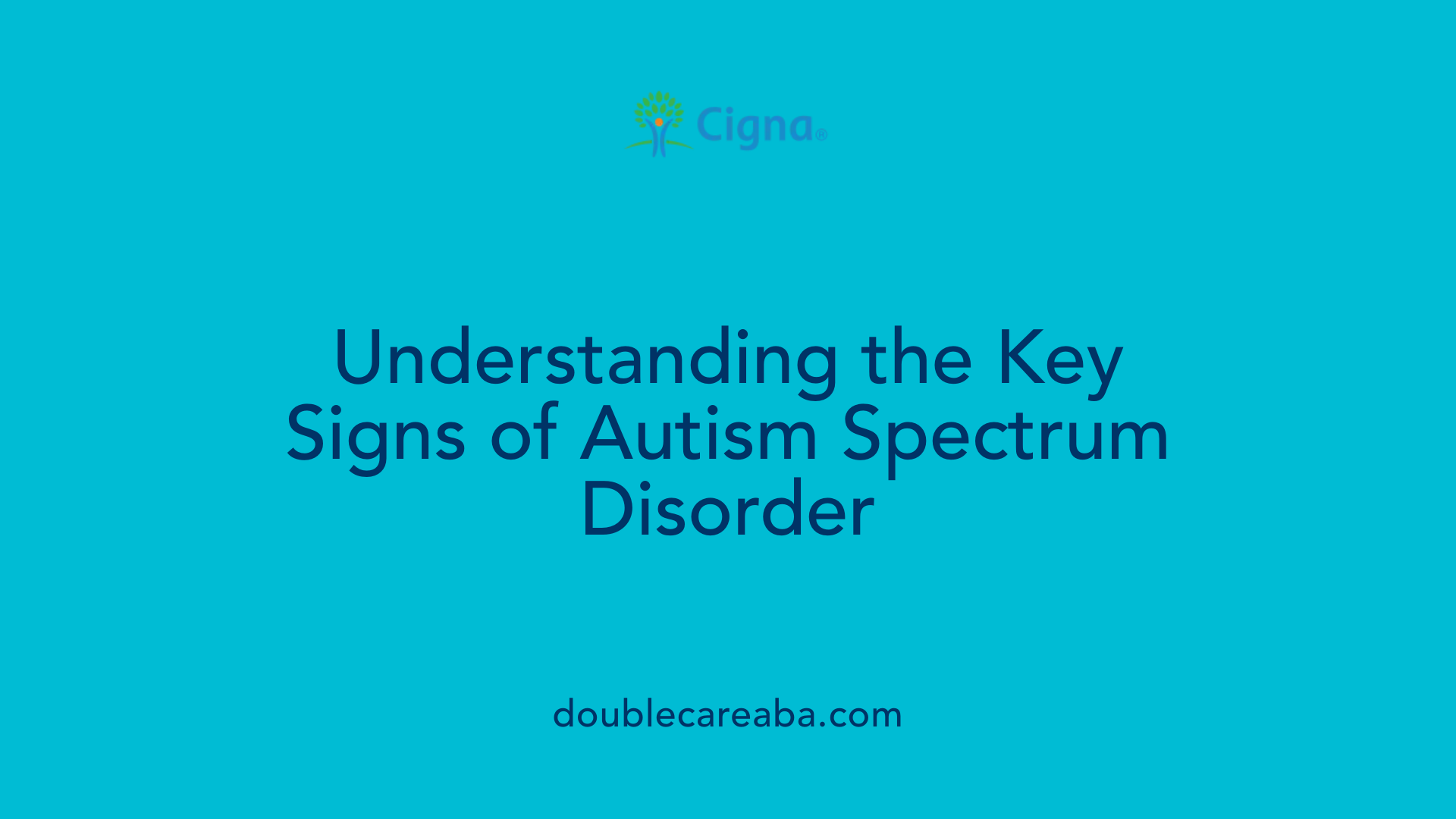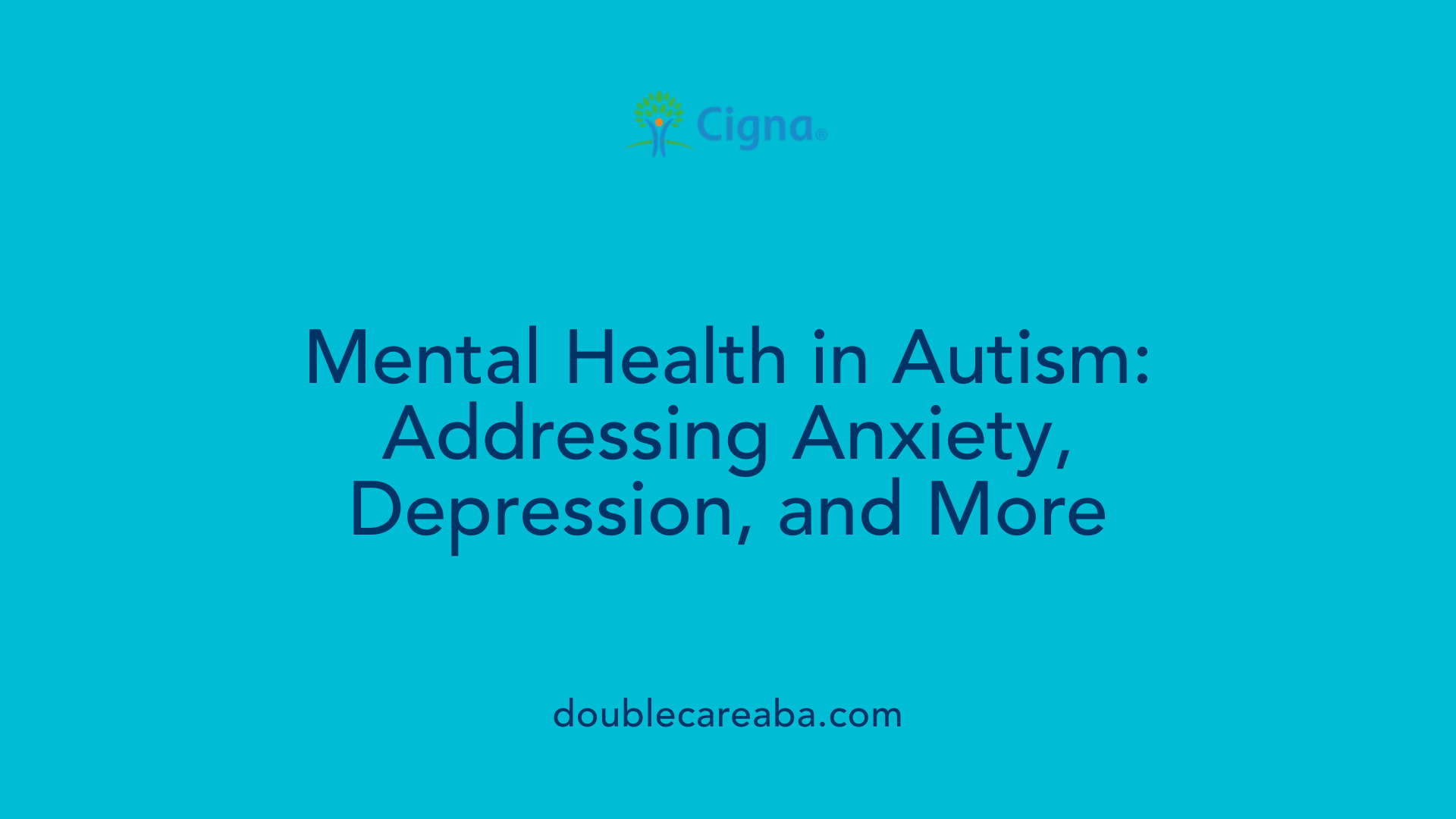A Comprehensive Overview of Autism-Related Health Challenges
Autism Spectrum Disorder (ASD) presents a wide range of social, behavioral, medical, and psychiatric challenges that impact individuals throughout their lives. While ASD itself is characterized by differences in brain functioning affecting social communication, interaction, and behavior, it often co-occurs with a variety of other health complications. This article explores the symptoms, causes, and diagnosis of autism, along with the numerous medical and psychiatric conditions that frequently accompany it. Emphasizing the importance of early detection and multidisciplinary management, we aim to provide a thorough understanding of autism complications to support improved quality of life for autistic individuals.
Core Symptoms and Diagnostic Features of Autism Spectrum Disorder

What are the main symptoms of autism spectrum disorder?
Autism spectrum disorder (ASD) presents with a variety of signs that can differ significantly among individuals. The most recognizable symptoms include challenges with social communication and interaction. For example, many children with ASD avoid eye contact, do not respond consistently to their names, and display limited facial expressions or gestures that typically convey emotions.
In addition to social difficulties, individuals often engage in restricted and repetitive behaviors. These may involve lining up toys meticulously, repeating certain phrases or sounds (echolalia), hand-flapping, rocking, or insisting on strict routines. Such behaviors are usually driven by a need for sameness and can serve as calming mechanisms.
Delayed language development is another common feature. Children might not begin to speak single words by around 16 months or show little interest in engaging in social-communicative activities like playing simple games or sharing attention.
Sensory sensitivities are also prevalent, where individuals might be overly sensitive to sounds, smells, or textures, or conversely, may not react to pain, extreme temperatures, or other tactile stimuli. Many have intense interests in specific objects or topics and might react oddly to sensory input.
These core symptoms typically emerge before age 2 and can vary in how severely they affect daily functioning. Early identification through observation and developmental screening is crucial for supporting children with ASD, as intervention can significantly improve social skills, communication, and overall quality of life.
Medical and Psychiatric Conditions Associated with Autism

What are the common medical and psychiatric conditions associated with autism?
Autism spectrum disorder (ASD) frequently occurs alongside various medical and mental health conditions, which can complicate diagnosis and management. Understanding these associated conditions helps in providing comprehensive care.
One of the most common medical issues seen in autistic individuals is gastrointestinal (GI) disorders. Approximately 21% of autistic children experience GI problems such as chronic constipation, abdominal pain, gastroesophageal reflux, and bowel inflammation. These issues can lead to discomfort, impact nutrition, and influence behavior.
Epilepsy and seizure disorders are also prevalent, affecting around 5% of autistic children and 12.1% of autistic adults on Medicaid. Seizures often begin in childhood or adolescence and may be indicated by symptoms like staring spells, involuntary movements, confusion, and severe headaches. Certain risk factors, such as language regression before age three, intellectual disabilities, or use of antipsychotic medications, increase the likelihood of seizures.
Sleep disturbances are highly common, with up to 80% of autistic individuals experiencing irregular sleep patterns. Difficulties with falling asleep, frequent night waking, and early morning waking are typical. These sleep issues can worsen behavioral challenges and reduce quality of life. Strategies like establishing routines and using melatonin supplements have shown promise in improving sleep quality.
Mental health disorders are significantly more common in people with autism. Anxiety affects about 17.1% of autistic children and 26% of adults. Depression is observed in approximately 7.5% of children and 20.2% of adults on Medicaid. Conditions like obsessive-compulsive disorder (OCD) also tend to be more frequent, especially in teens and adults, often presenting with repetitive behaviors that are difficult to distinguish from autism itself.
Additional psychiatric conditions include bipolar disorder, seen in about 7.8% of children and 15% of adults, characterized by mood swings between mania and depression. Schizophrenia, involving challenges with language processing and understanding others’ thoughts, affects about 8.1% of autistic adults. These comorbidities require careful assessment and tailored treatment.
Sensory processing issues are another hallmark of autism. Individuals may be overly sensitive to sensory input, such as loud sounds or bright lights, or underresponsive, failing to respond normally to extreme temperatures or pain. These sensory differences can influence behavior and participation in daily activities.
In summary, a multi-faceted health approach is essential. Autism often coexists with gastrointestinal and neurological issues, sleep problems, and a range of psychiatric disorders. Managing these conditions effectively can markedly improve quality of life and overall well-being for autistic individuals.
Impact of Autism on Daily Life and Social Functioning

How does autism impact daily life and social interactions?
Autism can significantly influence everyday experiences and how individuals interact with the world around them. Many autistic people face challenges in communication, such as difficulty expressing themselves or understanding others' emotions and social cues. This can make social interactions feel overwhelming or confusing, which may lead to feelings of isolation or frustration.
Sensory sensitivities are common in autism and can affect numerous daily activities. Bright lights, loud noises, or crowded environments may cause discomfort or sensory overload, impacting participation in work, school, or leisure activities. These sensitivities often require adjustments or accommodations to enable comfortable engagement.
Routines and structured environments are important for many with autism. They provide predictability and help reduce anxiety. When routines are disrupted or unfamiliar settings are encountered, distress or behavioral challenges may occur.
Despite these difficulties, many autistic individuals develop coping strategies and, with support, can achieve fulfilling lives. Early intervention and tailored therapies enhance social skills, communication, and independence. Building awareness and providing inclusive environments enable greater participation, helping autistic people forge meaningful relationships and contribute actively to society.
Overall, the effects of autism on daily life vary widely, but understanding and support play crucial roles in improving quality of life and social integration for autistic individuals.
Mental Health Challenges in Autistic Individuals

What are the mental health challenges commonly faced by autistic individuals?
Autistic individuals frequently encounter a variety of mental health conditions that can significantly influence their daily lives and overall well-being. Among the most common challenges are anxiety and depression, which often coexist with autism, making it difficult for individuals to navigate social situations and cope with everyday stress.
In addition to anxiety and depression, many autistic people also experience Attention Deficit Hyperactivity Disorder (ADHD). Symptoms such as difficulty concentrating, impulsivity, and hyperactivity can overlap with autism traits, complicating diagnosis and management. These co-occurring conditions can lead to increased behavioral difficulties and challenges in educational and social settings.
Obsessive-Compulsive Disorder (OCD) and bipolar disorder are also more prevalent among autistic individuals. OCD may manifest as repetitive behaviors and intense routines, often mistaken for autism symptoms, but requires targeted treatment. Bipolar disorder, characterized by mood swings between mania and depression, demands careful differentiation from autism-related behaviors.
Schizophrenia, a severe psychiatric disorder involving difficulties with perception, thought processing, and social engagement, affects a smaller subset of adults with autism but presents considerable challenges when present. Early recognition and treatment, typically with antipsychotic medications and therapy, are crucial for managing symptoms.
Many autistic individuals also experience neurological and physical health issues such as epilepsy and gastrointestinal disorders. These conditions can intertwine, influencing mental health through chronic discomfort, social isolation, and additional stress.
Sensory sensitivities and difficulty engaging in social interactions often contribute to heightened anxiety and emotional distress. Behavioral traits like repetitive behaviors and need for routines may serve as coping mechanisms but can also be sources of social misunderstanding and frustration.
Sleep disturbances, common in autism, exacerbate mental health problems, creating a cycle of fatigue and emotional instability. Eating behaviors, restricted or selective in many autistic people, can also influence mood and physical health, further impacting mental well-being.
In summary, mental health challenges are prevalent and complex in autistic individuals. Recognizing these conditions and providing tailored support—through therapies, social interventions, and medication—are essential for improving quality of life and promoting resilience. This highlights the critical importance of comprehensive assessment and holistic care approaches for autistic populations.
Health Complications: Gastrointestinal, Neurological, and Sleep Disorders

What health complications are associated with autism, such as gastrointestinal issues, epilepsy, or sleep problems?
Many individuals on the autism spectrum face a variety of health challenges that can significantly impact their daily lives and overall well-being.
Gastrointestinal (GI) issues are prevalent, affecting approximately 21% of autistic children. These problems can include chronic constipation, abdominal pain, gastroesophageal reflux, and bowel inflammation. Such issues not only cause discomfort but can also interfere with participation in daily activities and exacerbate behavioral challenges.
Seizures and epilepsy are also common, with about 5% of children and 12.1% of adults with autism experiencing co-occurring seizure disorders. These seizures may manifest through unexplained staring spells, involuntary movements, confusion, or severe headaches. The risk of epilepsy is higher among those with additional conditions like intellectual disability and prior language regression.
Sleep disturbances are widely reported, with up to 80% of autistic individuals experiencing disrupted sleep patterns. Common issues include difficulty falling asleep, frequent waking during the night, and early morning wakefulness. Sleep problems can worsen behavioral problems, reduce focus, and lower quality of life.
Sensory processing differences, such as hypersensitivity to sounds, lights, or textures, can further complicate health issues. For example, intense sensory sensitivities may lead to food selectivity, which can cause nutritional deficiencies.
Addressing these health conditions requires comprehensive, individualized intervention. Medical management of gastrointestinal problems, treatment for seizures, and strategies to improve sleep hygiene and sensory regulation are vital steps to enhance health outcomes.
| Complication Type | Common Symptoms | Typical Management | Additional Notes |
|---|---|---|---|
| Gastrointestinal issues | Constipation, reflux, abdominal pain | Dietary adjustments, medication | Affect participation in activities, associated with behavioral issues |
| Epilepsy | Seizures, involuntary movements | Antiseizure medications | Increased risk in those with prior regression or intellectual disability |
| Sleep disorders | Insomnia, frequent waking | Sleep routines, melatonin | Impact on cognitive and behavioral functioning |
| Sensory issues | Hypersensitivity or hyposensitivity | Sensory integration therapy | Can influence response to environmental stimuli and behavior |
Understanding and managing these health challenges through early diagnosis and tailored interventions can significantly improve quality of life for individuals with autism, helping them achieve better health and social integration.
Biological and Genetic Contributors to Autism
What neurological and developmental factors contribute to autism?
Autism spectrum disorder (ASD) is rooted in a complex array of biological and genetic factors that influence how the brain develops and functions from an early stage.
Genetically, autism is highly heritable and involves multiple genes. Research indicates that between 60% and 90% of autism risk comes from genetic contributions, including involvement of numerous genes, some of which may have mutations or be linked to specific genetic disorders such as fragile X syndrome or Rett syndrome.
Environmental influences during prenatal development also play a role. Factors such as advanced parental age, exposure to air pollutants, pesticides, maternal obesity, diabetes, and complications during pregnancy (like preeclampsia or fetal growth issues) have all been associated with an increased likelihood of autism.
Birth complications and neonatal issues significantly impact neurological development. Neonatal conditions such as respiratory distress, intracranial bleeding, seizures, septicemia, and neonatal hypoglycemia are linked with a higher risk of ASD. Preterm birth further amplifies this risk, likely due to early disruptions in brain growth.
From a neurodevelopmental perspective, differences are observable early in life. These include alterations in brain structures such as the amygdala, corpus callosum, and areas involved in synaptic connectivity that can affect neuronal communication.
Neurochemical imbalances also contribute, involving neurotransmitters and neuropeptides like GABA, glutamate, serotonin, dopamine, and oxytocin. Variations in these chemicals can influence mood, behavior, and social interaction patterns typical in autism.
In summary, autism arises from a convergence of genetic predispositions, environmental exposures before and during birth, and resulting changes in early brain development. These factors alter neural circuitry and neurochemical balances crucial for typical social, communication, and behavioral functioning.
| Contributors | Impact | Additional Factors |
|---|---|---|
| Multiple Genes & Mutations | Genetic predisposition affecting neural development | Family history, inherited variations |
| Environmental Prenatal Factors | Exposures influencing fetal brain growth | Maternal age, pollution, medications, health conditions |
| Birth & Neonatal Complications | Disruptions during birth affecting brain structures | Premature birth, neonatal infections, hypoxia |
| Brain Structure Variations | Changes in brain areas involved in emotion, communication, and processing | Amygdala, corpus callosum, synaptic density |
Understanding these intertwined factors helps clarify why autism presents so variedly among individuals, emphasizing the need for early diagnosis and tailored interventions.
Perinatal and Neonatal Risks Associated with Autism
What causes autism during pregnancy or neonatal period?
Autism spectrum disorder (ASD) during pregnancy or the neonatal phase is mainly caused by interactions between genetic factors and environmental influences. Research indicates that prenatal exposure to environmental hazards such as air pollution, pesticides, heavy metals, and endocrine-disrupting chemicals can elevate the risk of ASD.
Moreover, maternal health conditions like obesity, diabetes, infections, and pregnancy complications such as preeclampsia or fetal distress are linked with an increased likelihood of autism. Factors including advanced parental age and certain birth complications further contribute, indirectly impacting neurodevelopment.
While no single cause has been pinpointed, the consensus suggests that autism results from complex biological interactions during critical periods of brain development, involving both inherited genetic variations and environmental exposures. These factors may alter neural pathways, increasing the risk of ASD.
Early identification of perinatal and neonatal risks can be crucial in understanding and managing autism risk factors, emphasizing the importance of maternal health and proper prenatal care.
Management Strategies and Support Approaches
What management strategies and support options are available for addressing autism-related health challenges?
Addressing autism spectrum disorder involves a combination of tailored therapies and supportive measures aimed at enhancing quality of life and functional skills. Early diagnosis and intervention are vital, as they can significantly improve behavioral, social, and communication outcomes.
Behavioral therapies, such as applied behavior analysis (ABA), are widely supported and focus on reducing problematic behaviors while developing adaptive skills. These therapies are customized to each individual’s needs, emphasizing positive reinforcement to promote learning and independence.
Speech and occupational therapies are essential components of management. Speech therapy helps improve communication skills, whether verbal or alternative methods, while occupational therapy supports daily living skills and addresses sensory processing difficulties. Sensory integration therapy can help individuals better handle sensory input, reducing hypersensitivity or hyposensitivity to stimuli like loud noises or bright lights.
Social skills training and structured educational programs like TEACCH are designed to foster social interactions and facilitate learning in supportive environments. These approaches aim to enhance interpersonal skills, helping individuals navigate social settings more effectively.
In addition to behavioral and developmental therapies, medical treatments and medications are often employed to manage co-occurring conditions. These may include medications for anxiety, seizures, irritability, or ADHD symptoms, helping to stabilize behaviors that interfere with daily functioning.
Implementing a comprehensive support plan that involves multidisciplinary teams—including psychologists, speech-language pathologists, occupational therapists, and medical providers—ensures that each individual’s unique challenges are addressed. Ongoing assessment and adjustment of interventions help optimize outcomes.
While autism cannot be cured, the combination of early diagnosis, tailored therapies, and supportive environments enables many individuals to thrive and achieve their full potential.
The Role of Family and Community Support in Managing Autism
How does family training and support help individuals with autism?
Family support is essential in helping autistic individuals develop essential skills and manage daily challenges. Training programs can teach family members effective communication strategies, behavioral management techniques, and how to support emotional well-being. When families are educated about autism, they can advocate better for their loved ones and create a more understanding environment at home.
What are inclusive education and community programs?
Inclusive education involves integrating children with autism into mainstream classrooms with appropriate supports. Schools and community centers often run specialized programs promoting social interaction and sensory-friendly environments. These initiatives help autistic individuals gain skills, participate fully in society, and reduce feelings of isolation. Community programs such as social skills groups and recreational activities foster peer relationships and promote acceptance.
How does advocacy and public awareness influence societal attitudes?
Advocacy groups work tirelessly to raise awareness about autism, emphasizing acceptance and inclusion rather than just treatment. Public awareness campaigns educate society about the diversity within the spectrum and challenge misconceptions and stereotypes. This shift helps foster a more accepting environment, encouraging workplaces, schools, and neighborhoods to support autistic individuals effectively.
What efforts are being made to reduce social barriers and stigma?
Reducing social barriers involves promoting understanding and patience within communities. Initiatives include training for teachers, employers, and service providers to understand autism better. Laws and policies also support anti-discrimination, ensuring access to education, employment, and healthcare. Celebrating neurodiversity and sharing personal stories of autistic individuals helps normalize autism as a natural variation rather than a disorder to be 'fixed'.
| Strategy | Example | Benefit |
|---|---|---|
| Family training | Workshops for parents | Better support at home |
| Inclusive programs | School-based social groups | Social skills development |
| Public awareness | Media campaigns | Reduced stigma |
| Policy and law | Anti-discrimination laws | Equal opportunities |
Supporting families and communities greatly enhances the quality of life for autistic individuals. It fosters environments where differences are respected, paving the way for greater acceptance and success in all aspects of life.
The Neurodiversity Perspective and Ethical Considerations
Acceptance of autism as a natural variation
The neurodiversity movement emphasizes viewing autism not as a disorder to be cured but as a natural variation of human neurodevelopment. This perspective advocates for recognizing autistic traits—such as unique ways of thinking, communicating, and perceiving the world—as part of human diversity rather than deficits. Embracing autism in this way encourages society to value different neurological wiring and focus on providing support that enhances quality of life.
Resisting the idea of 'curing' autism
Many within the autistic community oppose the notion of curing or normalizing autism, arguing that such efforts can imply that autistic traits are inherently undesirable. They stress the importance of accepting individuals for who they are, rather than seeking to erase or diminish their differences. Instead of purely medical treatments aimed at eliminating autism, there is a growing emphasis on providing resources that support self-advocacy, independence, and social participation.
Promoting inclusion and diversity
Promoting inclusion involves creating environments—in schools, workplaces, and communities—that accommodate diverse needs. This includes implementing flexible communication methods, sensory-friendly spaces, and inclusive policies. Celebrating neurodiversity fosters understanding and respect, helping autistic individuals fully participate in society and reducing societal barriers and stigmas.
Ethical implications of treatment and diagnosis
Ethically, it is vital to balance early intervention and support with respect for individual autonomy. Diagnostic labeling should aim to inform support strategies without stigmatizing or marginalizing individuals. Interventions should prioritize enhancing personal well-being and skills rather than attempting to force conformity to neurotypical standards. Respecting an autistic person's identity and choices is crucial in fostering ethical, supportive environments.
| Aspect | Focus | Consideration |
|---|---|---|
| Acceptance | Viewing autism as diversity | Prevents devaluing autistic traits and emphasizes strengths |
| Treatment | Support rather than cure | Encourages autonomy and personal identity |
| Inclusion | Society's role | Reduces stigma, promotes participation |
| Ethical Approach | Diagnosis and intervention | Focused on support, avoiding discrimination |
Navigating Autism and Its Complications for Better Outcomes
Understanding the broad spectrum of autism and its associated health challenges is essential for providing supportive care and fostering inclusive environments. Ongoing research into the genetic, environmental, and neurobiological aspects of autism continues to enhance our knowledge and improve intervention strategies. Emphasizing early detection, multidisciplinary management, and societal acceptance can help optimize the quality of life for autistic individuals, enabling them to reach their full potential and participate meaningfully in society.
References
- Autism spectrum disorder - Symptoms and causes
- Medical conditions associated with autism
- 5 Autism Complications That You Should Know
- Autism Spectrum Disorder (ASD) Symptoms & Causes
- Autism Spectrum Disorder - StatPearls
- About Autism Spectrum Disorder
- Other conditions that affect autistic people
- Complications Among People With Autism
- Increased Risk of Autism Development in Children Whose ...
- Autism Spectrum Disorder and its Complications-EnableMe














